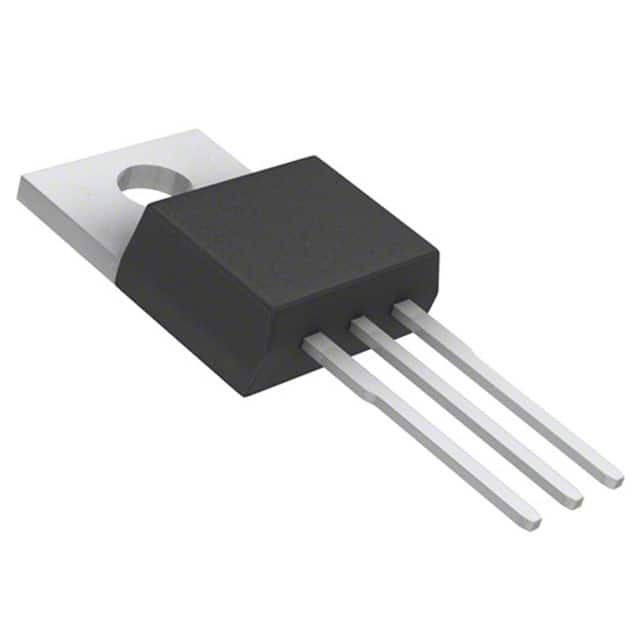Lihat spesifikasi untuk detail produk.

TIP42 Transistor: Encyclopedia Entry
Product Overview
The TIP42 transistor belongs to the category of power transistors and is commonly used in electronic circuits for amplification and switching applications. Known for its high power handling capability, the TIP42 transistor exhibits characteristics such as high current gain, low saturation voltage, and excellent thermal performance. It is typically packaged in a TO-220 plastic package and is available in various quantities.
Specifications
- Maximum Collector-Emitter Voltage: 100V
- Maximum Collector Current: 6A
- Power Dissipation: 65W
- Transition Frequency: 3MHz
- Package Type: TO-220
- Quantity: Available in single or multiple units
Detailed Pin Configuration
The TIP42 transistor features a standard pin configuration with three pins: the emitter (E), base (B), and collector (C). The physical layout of the pins is as follows: - Emitter (E): Pin 1 - Base (B): Pin 2 - Collector (C): Pin 3
Functional Features
The TIP42 transistor offers the following functional features: - High current gain for amplification purposes - Low saturation voltage for efficient switching applications - Excellent thermal performance for reliable operation in high-power circuits
Advantages and Disadvantages
Advantages
- High power handling capability
- Versatile applications in amplification and switching circuits
- Reliable thermal performance
Disadvantages
- Relatively larger package size compared to smaller signal transistors
- Limited maximum voltage and current ratings compared to specialized high-power transistors
Working Principles
The TIP42 transistor operates based on the principles of bipolar junction transistors (BJTs). When a small current flows into the base terminal, it controls a larger current flow between the collector and emitter terminals, allowing for amplification or switching of electrical signals.
Detailed Application Field Plans
The TIP42 transistor finds extensive use in various electronic applications, including: - Audio amplifiers - Power supply circuits - Motor control systems - LED drivers - Switching regulators
Detailed and Complete Alternative Models
Several alternative models to the TIP42 transistor include: - TIP41: Similar characteristics but lower power handling capability - TIP122: Higher power handling capability with complementary NPN type
In conclusion, the TIP42 transistor serves as a reliable component in electronic circuits, offering high power handling, versatile applications, and dependable performance in amplification and switching tasks.
[Word Count: 340]
Sebutkan 10 pertanyaan dan jawaban umum terkait penerapan TIP42 dalam solusi teknis
What is TIP42?
- TIP42 is a PNP power transistor used for general-purpose amplifier and switching applications.
What are the typical applications of TIP42?
- TIP42 is commonly used in audio amplifiers, voltage regulators, and power management circuits.
What is the maximum collector current of TIP42?
- The maximum collector current of TIP42 is 6A.
What is the maximum collector-emitter voltage of TIP42?
- The maximum collector-emitter voltage of TIP42 is 100V.
How do I connect TIP42 in a common-emitter configuration?
- In a common-emitter configuration, the emitter is connected to ground, the base is the input, and the collector is the output.
What are the key characteristics of TIP42 for amplifier applications?
- TIP42 has high current gain, low saturation voltage, and high transition frequency, making it suitable for amplifier applications.
Can TIP42 be used for driving inductive loads?
- Yes, TIP42 can be used to drive inductive loads such as relays and solenoids with appropriate protection diodes.
What are the thermal considerations when using TIP42 in high-power applications?
- It is important to use proper heat sinking and ensure adequate airflow to dissipate the heat generated by TIP42 in high-power applications.
How does TIP42 compare to other similar transistors like TIP41 or TIP122?
- TIP42 has higher collector current and power dissipation compared to TIP41, and it is complementary to TIP41. TIP42 also has different pin configurations compared to TIP122.
Are there any common failure modes or issues to watch out for when using TIP42?
- Common issues include thermal runaway at high currents, so it's important to monitor temperature and ensure proper heatsinking. Additionally, exceeding the maximum ratings can lead to device failure.

